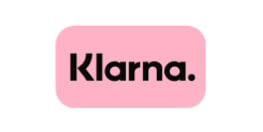
Florian ist aufgewachsen auf einem Bauernhof. Umgeben von Pferden, entdeckte er früh seine Faszination für diese majestätischen Tiere. Inspiriert von seiner reitbegeisterten Mutter, entwickelte er das Nahrungsergänzungmittel - Pferdegold. Seine tiefe Verbundenheit zur Natur und die leidenschaftliche Hingabe zu Pferden trieben ihn an, sein Unternehmen zu gründen.

On clothing, in the mouth, or in the eyes: Horse hair finds its way – especially during shedding. And some animals are already in the middle of it: They shed their plush winter coat so that the shorter, lighter summer coat can grow.
When does the coat change begin?
Logically, the coat change depends on the temperature, but primarily on the light conditions. Now that the days are (finally) getting longer again, the body clock is telling them: "It's time for a coat change!" For some horses, it starts as early as January.
Why does the coat change?
Basically, it's like with humans: In summer, you need something lighter to wear that covers your body without making you sweat. In autumn and winter, you need something warmer to keep you from freezing and getting wet. And since horses, as we all know, don't have wardrobes, their fur has to do the trick.
 On the left in the picture the shorter summer fur, on the right the plush winter fur.
On the left in the picture the shorter summer fur, on the right the plush winter fur.
Who controls the change of coat?
And who decides when it all starts? The pineal gland! The pineal gland is a hormone gland located in the horse's brain. When the days get longer again, it signals to the body that the end of winter is approaching and it's time for the fluffy summer coat.
The pineal gland is a multi-talented organ. It produces, for example, the sleep hormone melatonin, which regulates the sleep-wake cycle. The walnut-like gland is also responsible for reproduction.
Temperature and breed
Daylight determines when the coat change begins. Temperature, on the other hand, determines the "quality" of the coat. The rule here is: the colder the ambient temperature, the thicker and longer the coat becomes. Horses that spend most of their time in an open stable have a denser coat than their stabled counterparts.

Shetland ponies have a denser coat.
The breed also influences the density and thickness of the coat. Nordic breeds like Icelandic and Gotland ponies are dressed much more plushly than warmbloods and thoroughbreds. It would be highly illogical for Mother Nature to equip an animal that has to cope with the lowest sub-zero temperatures with a silk coat.
Many horses become weak during the coat change
Shedding old hair and growing new hair is hard work for the body. During this extremely strenuous time, horses therefore have increased nutritional needs – especially seniors, sport horses, broodmares, and horses with metabolic disorders reach their nutritional limits.
The result: The coat becomes dull and shaggy, and the four-legged friend becomes weak and lacks energy. But things get even worse: Many horses lose weight, especially those that are difficult to feed or are older.
During the shedding period, the metabolism works at full speed, and the need for protein increases. The reason: The horse needs to produce protein to grow new hair – and this is draining. Quite a few horses lose a lot of weight during this time. Did you know? Most sport horses are difficult to feed.
These nutrients are often in short supply
Horses have an increased need for nutrients during the shedding period. If these nutrients are not met, a nutrient deficiency is inevitable . If a horse lacks important trace elements, such as zinc, for example, its immune system often collapses. And if the body's protective defenses are weakened, the horse is much more susceptible to infections and other illnesses.
Zinc is a true all-rounder. This trace element is a major component of hair, is needed for coat formation, regenerates the skin, inhibits itching, and boosts the immune system. A zinc deficiency is not without its problems: It can lead to a weakened immune system, skin and mucous membrane damage, mud fever, mite infestation, and fungal infections. Therefore: a round of zinc for everyone!
As already mentioned, horses have an increased need for protein during the shedding period. Flaxseed and spirulina contain plenty of protein – spirulina, at around 60 percent, is among the top protein sources! Therefore, these two protein sources should be included in every trough.
 Local superfood: flaxseed.
Local superfood: flaxseed.
But flaxseed and spirulina contain even more: Omega 3. These polyunsaturated fatty acids are considered anti-inflammatory, support immune cells, and are also said to have a protective effect on the heart and circulatory system. After all, the circulatory system is quite challenged during the shedding period.
When talking about proteins, amino acids are essential. Amino acids are the building blocks of proteins. The two essential amino acids methionine and lysine are particularly important for skin and coat. "Essential" means that the horse's body cannot produce them itself, meaning they must be supplemented with the horse's diet.
Another superfood that literally packs a punch: brewer's yeast. Brewer's yeast provides a "cocktail" of valuable B vitamins, minerals, and important amino acids. Manganese, zinc, copper, biotin? It's got it all—and a little more. Brewer's yeast supports the production of skin and hair cells and promotes a shiny coat. No wonder brewer's yeast is so popular among horse experts.
Well supplied with horse gold
About Horse Gold
More than 50,000 customers trust Pferdegold. The popularity of the products is demonstrated, among other things, by the many 5-star reviews on Reviews.io. These reviews are all verified, meaning they are genuine.
All products are also developed, manufactured and packaged in Germany – and shipped in a climate-neutral manner.
 The team behind Pferdegold.
The team behind Pferdegold.
At Pferdegold, animal love doesn't end at the online checkout. The company supports Gut Aiderbichl, Plant-my-tree, and Hektar Nektar. Gut Aiderbichl gives neglected and abused animals a new home. Plant-my-tree plants trees as much as it can, and the bee rescuers at Hektar Nektar protect bees! After all, no one buzzes as beautifully as they do.
Our tip:
You can order Pferdegold Skin & Coat in our online shop. Thanks to our 30-day money-back guarantee, you take absolutely no risk. If you're not satisfied, you'll receive a full refund. No ifs, ands, or buts.
No more skin irritations!

Pferdegold Skin & Coat relieved my horse of skin irritations, and the bald patches began to grow back. A great investment for my horse's health.
Order now














